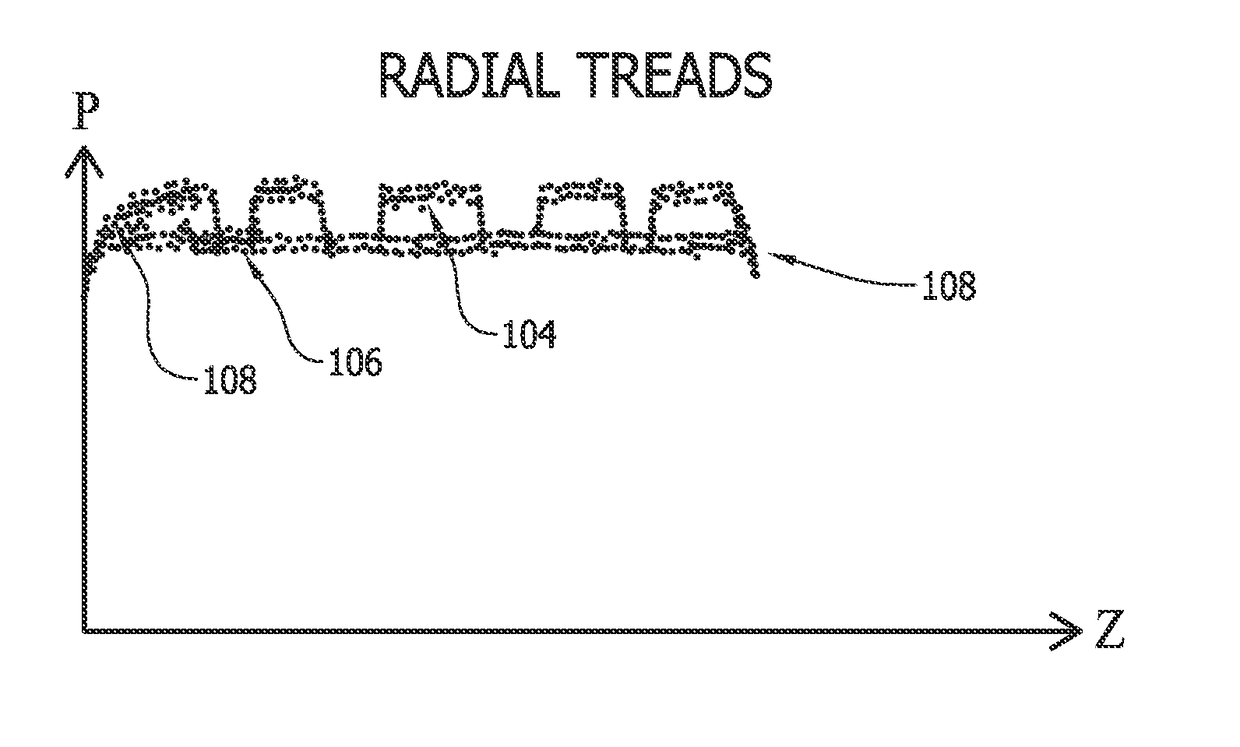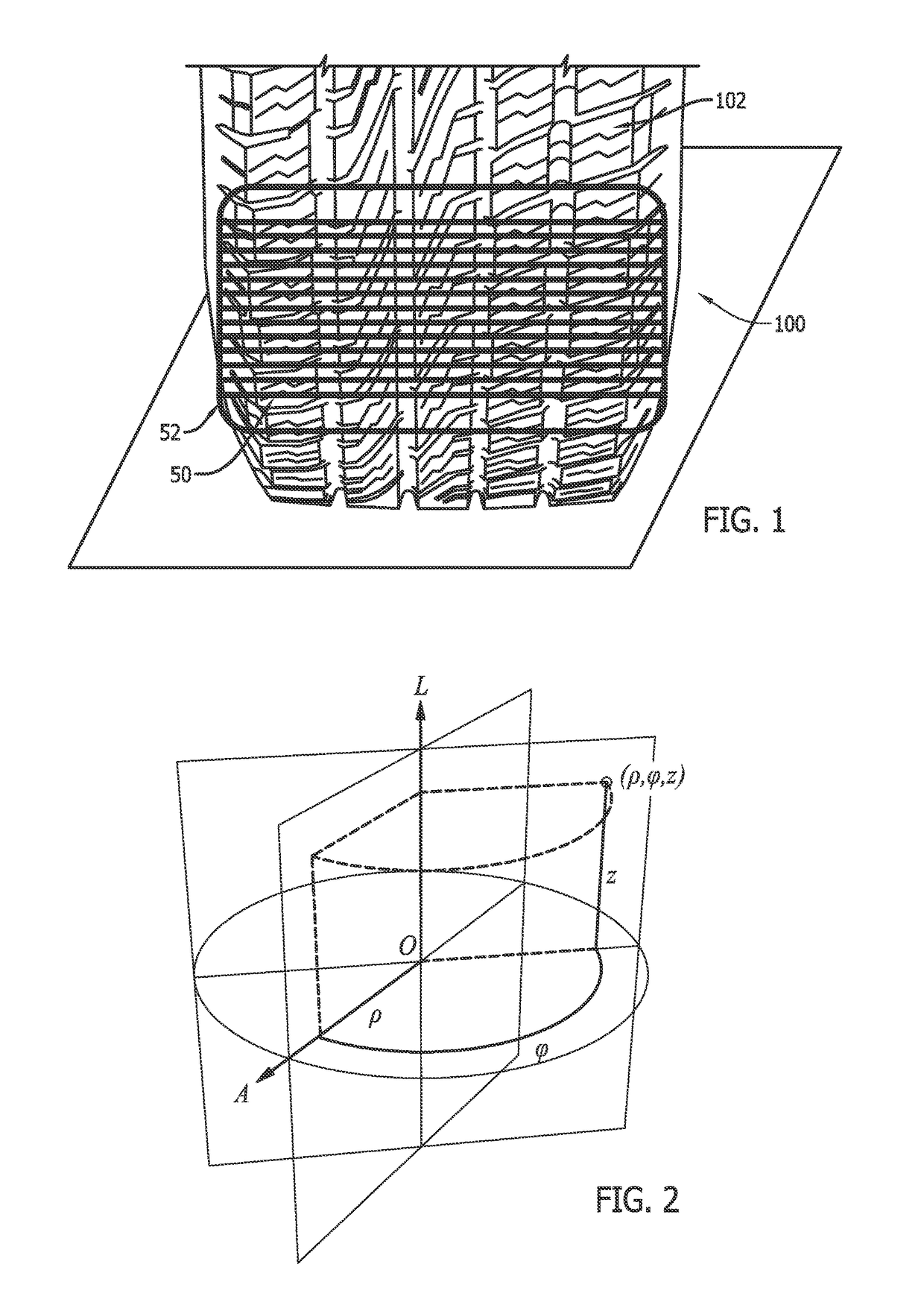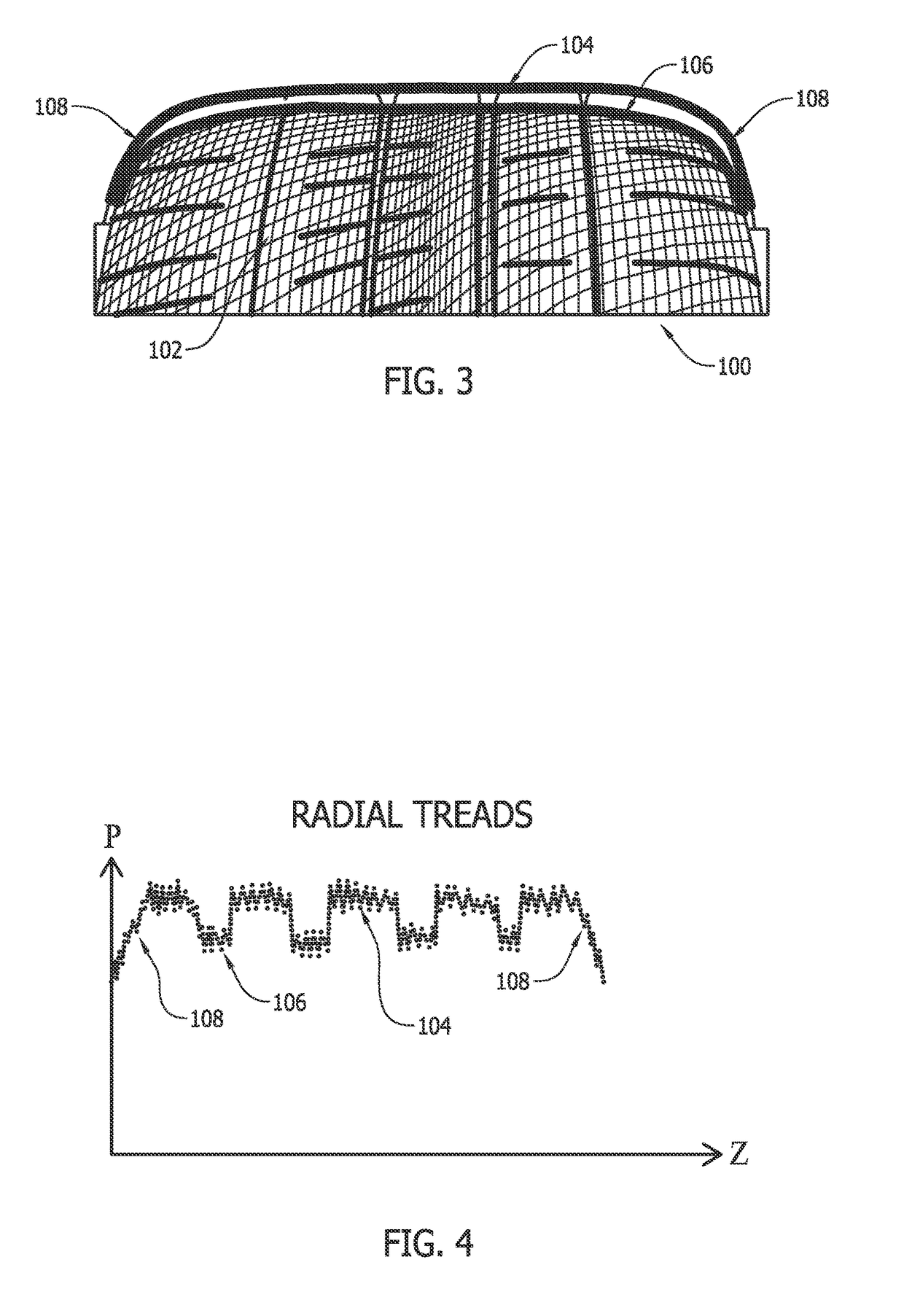Method for tire tread depth modeling and image annotation
a tire and depth modeling technology, applied in vehicle tyre testing, static indicating devices, instruments, etc., can solve the problems of excessive fuel consumption of the vehicle, dangerously susceptible to hydroplaning and loss of control, uneven tread wear across the width of the outer surface of the tire, etc., to achieve the effect of quick identification
- Summary
- Abstract
- Description
- Claims
- Application Information
AI Technical Summary
Benefits of technology
Problems solved by technology
Method used
Image
Examples
Embodiment Construction
[0039]The following detailed description illustrates the invention by way of example and not by way of limitation. The description enables one skilled in the art to make and use the present disclosure, and describes several embodiments, adaptations, variations, alternatives, and uses of the present disclosure, including what is presently believed to be the best mode of carrying out the present disclosure.
[0040]As used herein, the phrase “vehicle wheel assembly” is used generally to refer to an assembly consisting of a tire mounted to a vehicle wheel rim, however, it will be understood that the phrase is not limited there to, and is considered to include simply an unmounted tire without a vehicle rim.
[0041]Data acquired through machine vision imaging sensors used by vehicle service systems and vehicle inspection systems can be utilized in a variety of ways, including the development of a virtual model of an object being imaged, such as a vehicle wheel assembly, from a collection of d...
PUM
 Login to View More
Login to View More Abstract
Description
Claims
Application Information
 Login to View More
Login to View More - R&D
- Intellectual Property
- Life Sciences
- Materials
- Tech Scout
- Unparalleled Data Quality
- Higher Quality Content
- 60% Fewer Hallucinations
Browse by: Latest US Patents, China's latest patents, Technical Efficacy Thesaurus, Application Domain, Technology Topic, Popular Technical Reports.
© 2025 PatSnap. All rights reserved.Legal|Privacy policy|Modern Slavery Act Transparency Statement|Sitemap|About US| Contact US: help@patsnap.com



